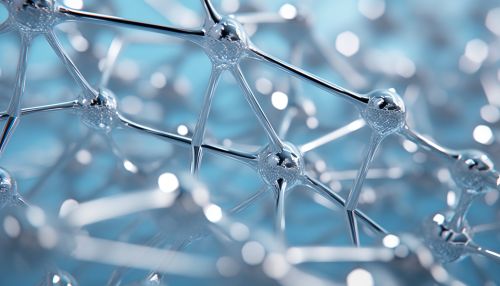Intramolecular Force
Introduction
Intramolecular forces, also known as chemical bonds, are the forces of attraction that hold atoms together within a molecule. These forces are responsible for the formation of chemical substances, and their strength can greatly affect the physical and chemical properties of matter. Intramolecular forces are much stronger than intermolecular forces, which are the forces of attraction between different molecules.
Types of Intramolecular Forces
There are three main types of intramolecular forces: ionic bonding, covalent bonding, and metallic bonding. Each type of bonding is characterized by different types of interactions between atoms and varies in strength.
Ionic Bonding


Ionic bonding occurs when one atom donates one or more of its electrons to another atom. This results in the formation of ions, which are atoms or groups of atoms with a net electric charge. The positively charged ion (cation) and the negatively charged ion (anion) are held together by the electrostatic attraction between them. This type of bonding typically occurs between metals and non-metals.
Covalent Bonding
Covalent bonding involves the sharing of electron pairs between atoms. This type of bonding typically occurs between non-metal atoms. The shared electron pair is also known as a covalent bond. Covalent bonds can be single, double, or triple, depending on the number of shared electron pairs.
Metallic Bonding
Metallic bonding is the force of attraction between delocalized electrons, often referred to as a "sea of electrons," and the positively charged metal ions. This type of bonding occurs in metallic elements and alloys, and it gives metals their unique properties, such as high electrical conductivity and malleability.
Factors Influencing Intramolecular Forces
Several factors can influence the strength and nature of intramolecular forces. These include the types of atoms involved, the electronegativity of the atoms, the atomic radius, and the number of electrons available for bonding.
Role in Physical and Chemical Properties
The type and strength of intramolecular forces play a significant role in determining the physical and chemical properties of substances. For instance, substances with strong intramolecular forces tend to have higher melting and boiling points, while those with weaker forces have lower melting and boiling points. Similarly, the type of intramolecular force can influence a substance's solubility, electrical conductivity, and reactivity.
Conclusion
Understanding intramolecular forces is crucial in many fields, including chemistry, biology, and materials science. These forces dictate how atoms combine to form molecules, and ultimately, the properties of the substances we encounter in our daily lives.
